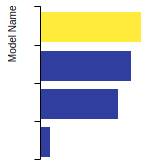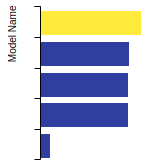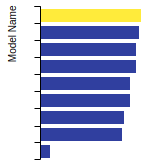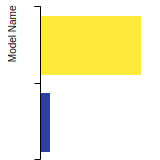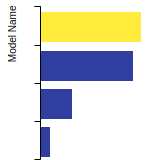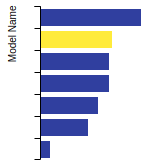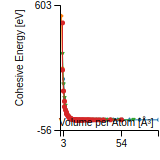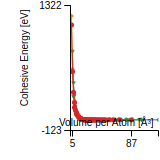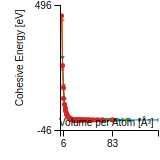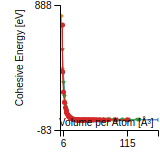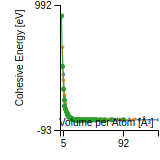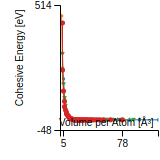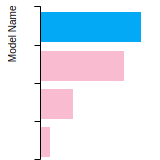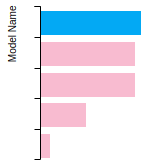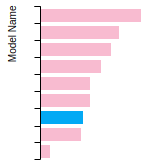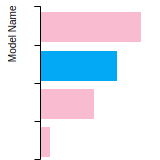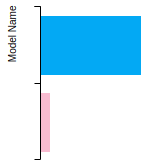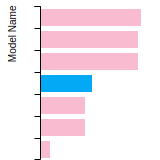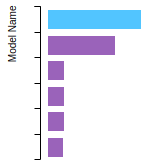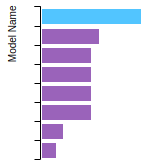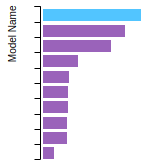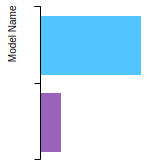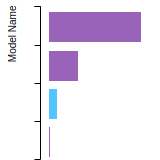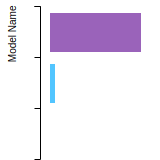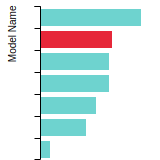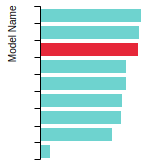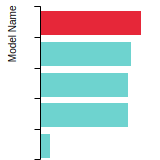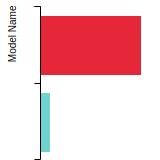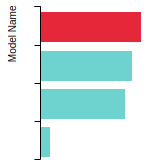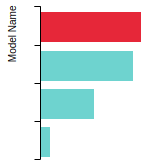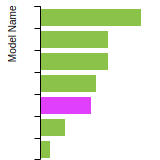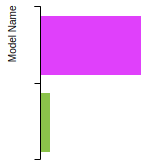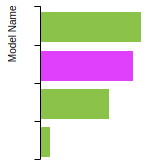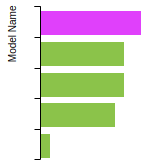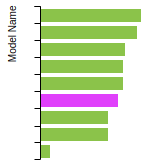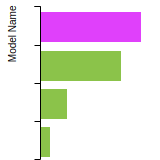 SW_ZhouWardMartin_2013_CdTeZnSeHgS__MO_503261197030_003
SW_ZhouWardMartin_2013_CdTeZnSeHgS__MO_503261197030_003
Use this Potential
| Title
A single sentence description.
|
Stillinger-Weber potential for the Zn-Cd-Hg-S-Se-Te system developed by Zhou et al. (2013) v003 |
|---|---|
| Description
A short description of the Model describing its key features including for example: type of model (pair potential, 3-body potential, EAM, etc.), modeled species (Ac, Ag, ..., Zr), intended purpose, origin, and so on.
|
Bulk and multilayered thin film crystals of II-VI semiconductor compounds are the leading materials for infrared sensing, gamma-ray detection, photovoltaics, and quantum dot lighting applications. The key to achieving high performance for these applications is reducing crystallographic defects. Unfortunately, past efforts to improve these materials have been prolonged due to a lack of understanding with regards to defect formation and evolution mechanisms. To enable high-fidelity and high-efficiency atomistic simulations of defect mechanisms, this paper develops a Stillinger-Weber interatomic potential database for semiconductor compounds composed of the major II-VI elements Zn, Cd, Hg, S, Se, and Te. The potential's fidelity is achieved by optimizing all the pertinent model parameters, by imposing reasonable energy trends to correctly capture the transformation between elemental, solid solution, and compound phases, and by capturing exactly the experimental cohesive energies, lattice constants, and bulk moduli of all binary compounds. Verification tests indicate that our model correctly predicts crystalline growth of all binary compounds during molecular dynamics simulations of vapor deposition. Two stringent cases convincingly show that our potential is applicable for a variety of compound configurations involving all the six elements considered here. In the first case, we demonstrate a successful molecular dynamics simulation of crystalline growth of an alloyed (Cd_0.28Zn_0.68Hg_0.04) (Te_0.20Se_0.18S_0.62) compound on a ZnS substrate. In the second case, we demonstrate the predictive power of our model on defects, such as misfit dislocations, stacking faults, and subgrain nucleation, using a complex growth simulation of ZnS/CdSe/HgTe multilayers that also contain all the six elements considered here. Using CdTe as a case study, a comprehensive comparison of our potential with literature potentials is also made. Finally, we also propose unique insights for improving the Stillinger-Weber potential in future developments. |
| Species
The supported atomic species.
| Cd, Hg, S, Se, Te, Zn |
| Disclaimer
A statement of applicability provided by the contributor, informing users of the intended use of this KIM Item.
|
None |
| Contributor |
Mingjian Wen |
| Maintainer |
Mingjian Wen |
| Implementer | Mingjian Wen |
| Developer |
Xiaowang Zhou Donald K. Ward J. E. Martin F. B. van Swol J.L. Cruz-Campa D. Zubia |
| Published on KIM | 2021 |
| How to Cite |
This Model originally published in [1-3] is archived in OpenKIM [4-7]. [1] Stillinger FH, Weber TA. Computer simulation of local order in condensed phases of silicon. Physical Review B. 1985Apr;31(8):5262–71. doi:10.1103/PhysRevB.31.5262 [2] Tadmor EB, Miller RE. Modeling Materials: Continuum, Atomistic and Multiscale Techniques. Cambridge University Press; 2011. [3] Zhou XW, Ward DK, Martin JE, Swol FB van, Cruz-Campa JL, Zubia D. Stillinger–Weber potential for the II-VI elements Zn-Cd-Hg-S-Se-Te. Physical Review B. 2013Aug;88(8):085309. doi:10.1103/PhysRevB.88.085309 — (Primary Source) A primary source is a reference directly related to the item documenting its development, as opposed to other sources that are provided as background information. [4] Wen M, Zhou X, Ward DK, Martin JE, Swol FB van, Cruz-Campa JL, et al. Stillinger-Weber potential for the Zn-Cd-Hg-S-Se-Te system developed by Zhou et al. (2013) v003. OpenKIM; 2021. doi:10.25950/8846e83d [5] Wen M, Afshar Y, Stillinger FH, Weber TA. Stillinger-Weber (SW) Model Driver v005. OpenKIM; 2021. doi:10.25950/934dca3e [6] Tadmor EB, Elliott RS, Sethna JP, Miller RE, Becker CA. The potential of atomistic simulations and the Knowledgebase of Interatomic Models. JOM. 2011;63(7):17. doi:10.1007/s11837-011-0102-6 [7] Elliott RS, Tadmor EB. Knowledgebase of Interatomic Models (KIM) Application Programming Interface (API). OpenKIM; 2011. doi:10.25950/ff8f563a Click here to download the above citation in BibTeX format. |
| Citations
This panel presents information regarding the papers that have cited the interatomic potential (IP) whose page you are on. The OpenKIM machine learning based Deep Citation framework is used to determine whether the citing article actually used the IP in computations (denoted by "USED") or only provides it as a background citation (denoted by "NOT USED"). For more details on Deep Citation and how to work with this panel, click the documentation link at the top of the panel. The word cloud to the right is generated from the abstracts of IP principle source(s) (given below in "How to Cite") and the citing articles that were determined to have used the IP in order to provide users with a quick sense of the types of physical phenomena to which this IP is applied. The bar chart shows the number of articles that cited the IP per year. Each bar is divided into green (articles that USED the IP) and blue (articles that did NOT USE the IP). Users are encouraged to correct Deep Citation errors in determination by clicking the speech icon next to a citing article and providing updated information. This will be integrated into the next Deep Citation learning cycle, which occurs on a regular basis. OpenKIM acknowledges the support of the Allen Institute for AI through the Semantic Scholar project for providing citation information and full text of articles when available, which are used to train the Deep Citation ML algorithm. |
This panel provides information on past usage of this interatomic potential (IP) powered by the OpenKIM Deep Citation framework. The word cloud indicates typical applications of the potential. The bar chart shows citations per year of this IP (bars are divided into articles that used the IP (green) and those that did not (blue)). The complete list of articles that cited this IP is provided below along with the Deep Citation determination on usage. See the Deep Citation documentation for more information. 
Help us to determine which of the papers that cite this potential actually used it to perform calculations. If you know, click the .
|
| Funding | Not available |
| Short KIM ID
The unique KIM identifier code.
| MO_503261197030_003 |
| Extended KIM ID
The long form of the KIM ID including a human readable prefix (100 characters max), two underscores, and the Short KIM ID. Extended KIM IDs can only contain alpha-numeric characters (letters and digits) and underscores and must begin with a letter.
| SW_ZhouWardMartin_2013_CdTeZnSeHgS__MO_503261197030_003 |
| DOI |
10.25950/8846e83d https://doi.org/10.25950/8846e83d https://commons.datacite.org/doi.org/10.25950/8846e83d |
| KIM Item Type
Specifies whether this is a Portable Model (software implementation of an interatomic model); Portable Model with parameter file (parameter file to be read in by a Model Driver); Model Driver (software implementation of an interatomic model that reads in parameters).
| Portable Model using Model Driver SW__MD_335816936951_005 |
| Driver | SW__MD_335816936951_005 |
| KIM API Version | 2.0 |
| Potential Type | sw |
| Previous Version | SW_ZhouWardMartin_2013_CdTeZnSeHgS__MO_503261197030_002 |
| Grade | Name | Category | Brief Description | Full Results | Aux File(s) |
|---|---|---|---|---|---|
| P | vc-species-supported-as-stated | mandatory | The model supports all species it claims to support; see full description. |
Results | Files |
| P | vc-periodicity-support | mandatory | Periodic boundary conditions are handled correctly; see full description. |
Results | Files |
| P | vc-permutation-symmetry | mandatory | Total energy and forces are unchanged when swapping atoms of the same species; see full description. |
Results | Files |
| A | vc-forces-numerical-derivative | consistency | Forces computed by the model agree with numerical derivatives of the energy; see full description. |
Results | Files |
| P | vc-dimer-continuity-c1 | informational | The energy versus separation relation of a pair of atoms is C1 continuous (i.e. the function and its first derivative are continuous); see full description. |
Results | Files |
| P | vc-objectivity | informational | Total energy is unchanged and forces transform correctly under rigid-body translation and rotation; see full description. |
Results | Files |
| P | vc-inversion-symmetry | informational | Total energy is unchanged and forces change sign when inverting a configuration through the origin; see full description. |
Results | Files |
| P | vc-memory-leak | informational | The model code does not have memory leaks (i.e. it releases all allocated memory at the end); see full description. |
Results | Files |
| P | vc-thread-safe | mandatory | The model returns the same energy and forces when computed in serial and when using parallel threads for a set of configurations. Note that this is not a guarantee of thread safety; see full description. |
Results | Files |
| P | vc-unit-conversion | mandatory | The model is able to correctly convert its energy and/or forces to different unit sets; see full description. |
Results | Files |
BCC Lattice Constant
This bar chart plot shows the mono-atomic body-centered cubic (bcc) lattice constant predicted by the current model (shown in the unique color) compared with the predictions for all other models in the OpenKIM Repository that support the species. The vertical bars show the average and standard deviation (one sigma) bounds for all model predictions. Graphs are generated for each species supported by the model.
Cohesive Energy Graph
This graph shows the cohesive energy versus volume-per-atom for the current mode for four mono-atomic cubic phases (body-centered cubic (bcc), face-centered cubic (fcc), simple cubic (sc), and diamond). The curve with the lowest minimum is the ground state of the crystal if stable. (The crystal structure is enforced in these calculations, so the phase may not be stable.) Graphs are generated for each species supported by the model.
Diamond Lattice Constant
This bar chart plot shows the mono-atomic face-centered diamond lattice constant predicted by the current model (shown in the unique color) compared with the predictions for all other models in the OpenKIM Repository that support the species. The vertical bars show the average and standard deviation (one sigma) bounds for all model predictions. Graphs are generated for each species supported by the model.
Dislocation Core Energies
This graph shows the dislocation core energy of a cubic crystal at zero temperature and pressure for a specific set of dislocation core cutoff radii. After obtaining the total energy of the system from conjugate gradient minimizations, non-singular, isotropic and anisotropic elasticity are applied to obtain the dislocation core energy for each of these supercells with different dipole distances. Graphs are generated for each species supported by the model.
(No matching species)FCC Elastic Constants
This bar chart plot shows the mono-atomic face-centered cubic (fcc) elastic constants predicted by the current model (shown in blue) compared with the predictions for all other models in the OpenKIM Repository that support the species. The vertical bars show the average and standard deviation (one sigma) bounds for all model predictions. Graphs are generated for each species supported by the model.
FCC Lattice Constant
This bar chart plot shows the mono-atomic face-centered cubic (fcc) lattice constant predicted by the current model (shown in red) compared with the predictions for all other models in the OpenKIM Repository that support the species. The vertical bars show the average and standard deviation (one sigma) bounds for all model predictions. Graphs are generated for each species supported by the model.
FCC Stacking Fault Energies
This bar chart plot shows the intrinsic and extrinsic stacking fault energies as well as the unstable stacking and unstable twinning energies for face-centered cubic (fcc) predicted by the current model (shown in blue) compared with the predictions for all other models in the OpenKIM Repository that support the species. The vertical bars show the average and standard deviation (one sigma) bounds for all model predictions. Graphs are generated for each species supported by the model.
(No matching species)FCC Surface Energies
This bar chart plot shows the mono-atomic face-centered cubic (fcc) relaxed surface energies predicted by the current model (shown in blue) compared with the predictions for all other models in the OpenKIM Repository that support the species. The vertical bars show the average and standard deviation (one sigma) bounds for all model predictions. Graphs are generated for each species supported by the model.
(No matching species)SC Lattice Constant
This bar chart plot shows the mono-atomic simple cubic (sc) lattice constant predicted by the current model (shown in the unique color) compared with the predictions for all other models in the OpenKIM Repository that support the species. The vertical bars show the average and standard deviation (one sigma) bounds for all model predictions. Graphs are generated for each species supported by the model.
Cubic Crystal Basic Properties Table
Species: CdSpecies: Hg
Species: S
Species: Se
Species: Te
Species: Zn
Creators:
Contributor: karls
Publication Year: 2019
DOI: https://doi.org/10.25950/64cb38c5
This Test Driver uses LAMMPS to compute the cohesive energy of a given monoatomic cubic lattice (fcc, bcc, sc, or diamond) at a variety of lattice spacings. The lattice spacings range from a_min (=a_min_frac*a_0) to a_max (=a_max_frac*a_0) where a_0, a_min_frac, and a_max_frac are read from stdin (a_0 is typically approximately equal to the equilibrium lattice constant). The precise scaling and number of lattice spacings sampled between a_min and a_0 (a_0 and a_max) is specified by two additional parameters passed from stdin: N_lower and samplespacing_lower (N_upper and samplespacing_upper). Please see README.txt for further details.
Creators:
Contributor: ilia
Publication Year: 2024
DOI: https://doi.org/10.25950/888f9943
Computes the elastic constants for an arbitrary crystal. A robust computational protocol is used, attempting multiple methods and step sizes to achieve an acceptably low error in numerical differentiation and deviation from material symmetry. The crystal structure is specified using the AFLOW prototype designation as part of the Crystal Genome testing framework. In addition, the distance from the obtained elasticity tensor to the nearest isotropic tensor is computed.
| Test | Test Results | Link to Test Results page | Benchmark time
Usertime multiplied by the Whetstone Benchmark. This number can be used (approximately) to compare the performance of different models independently of the architecture on which the test was run.
Measured in Millions of Whetstone Instructions (MWI) |
|---|---|---|---|
| Elastic constants for SeZn in AFLOW crystal prototype A2B_cP12_205_c_a at zero temperature and pressure v000 | view | 115444 | |
| Elastic constants for SZn in AFLOW crystal prototype A2B_cP12_205_c_a at zero temperature and pressure v000 | view | 152247 |
Creators: Junhao Li and Ellad Tadmor
Contributor: tadmor
Publication Year: 2019
DOI: https://doi.org/10.25950/5853fb8f
Computes the cubic elastic constants for some common crystal types (fcc, bcc, sc, diamond) by calculating the hessian of the energy density with respect to strain. An estimate of the error associated with the numerical differentiation performed is reported.
Creators:
Contributor: ilia
Publication Year: 2024
DOI: https://doi.org/10.25950/2f2c4ad3
Computes the equilibrium crystal structure and energy for an arbitrary crystal at zero temperature and applied stress by performing symmetry-constrained relaxation. The crystal structure is specified using the AFLOW prototype designation. Multiple sets of free parameters corresponding to the crystal prototype may be specified as initial guesses for structure optimization. No guarantee is made regarding the stability of computed equilibria, nor that any are the ground state.
Creators: Daniel S. Karls and Junhao Li
Contributor: karls
Publication Year: 2019
DOI: https://doi.org/10.25950/2765e3bf
Equilibrium lattice constant and cohesive energy of a cubic lattice at zero temperature and pressure.
Creators: Daniel S. Karls and Junhao Li
Contributor: karls
Publication Year: 2019
DOI: https://doi.org/10.25950/c339ca32
Calculates lattice constant of hexagonal bulk structures at zero temperature and pressure by using simplex minimization to minimize the potential energy.
| Test | Test Results | Link to Test Results page | Benchmark time
Usertime multiplied by the Whetstone Benchmark. This number can be used (approximately) to compare the performance of different models independently of the architecture on which the test was run.
Measured in Millions of Whetstone Instructions (MWI) |
|---|---|---|---|
| Equilibrium lattice constants for hcp Cd v005 | view | 19672 | |
| Equilibrium lattice constants for hcp Hg v005 | view | 19985 | |
| Equilibrium lattice constants for hcp S v005 | view | 23087 | |
| Equilibrium lattice constants for hcp Se v005 | view | 21959 | |
| Equilibrium lattice constants for hcp Te v005 | view | 23650 | |
| Equilibrium lattice constants for hcp Zn v005 | view | 19014 |
Creators:
Contributor: efuem
Publication Year: 2023
DOI: https://doi.org/10.25950/fca89cea
Computes the monovacancy formation energy and relaxation volume for cubic and hcp monoatomic crystals.
| Test | Test Results | Link to Test Results page | Benchmark time
Usertime multiplied by the Whetstone Benchmark. This number can be used (approximately) to compare the performance of different models independently of the architecture on which the test was run.
Measured in Millions of Whetstone Instructions (MWI) |
|---|---|---|---|
| Monovacancy formation energy and relaxation volume for hcp Cd | view | 282703 | |
| Monovacancy formation energy and relaxation volume for hcp Zn | view | 374949 |
Creators:
Contributor: efuem
Publication Year: 2023
DOI: https://doi.org/10.25950/c27ba3cd
Computes the monovacancy formation and migration energies for cubic and hcp monoatomic crystals.
| Test | Test Results | Link to Test Results page | Benchmark time
Usertime multiplied by the Whetstone Benchmark. This number can be used (approximately) to compare the performance of different models independently of the architecture on which the test was run.
Measured in Millions of Whetstone Instructions (MWI) |
|---|---|---|---|
| Vacancy formation and migration energy for hcp Cd | view | 3701712 | |
| Vacancy formation and migration energy for hcp Zn | view | 3023079 |
| Test | Error Categories | Link to Error page |
|---|---|---|
| Cohesive energy versus lattice constant curve for bcc Se v004 | other | view |
ElasticConstantsHexagonal__TD_612503193866_004
| Test | Error Categories | Link to Error page |
|---|---|---|
| Elastic constants for hcp Cd at zero temperature v004 | other | view |
| Elastic constants for hcp Hg at zero temperature v004 | other | view |
| Elastic constants for hcp S at zero temperature v004 | other | view |
| Elastic constants for hcp Se at zero temperature v004 | other | view |
| Elastic constants for hcp Te at zero temperature v004 | other | view |
| Elastic constants for hcp Zn at zero temperature v004 | other | view |
EquilibriumCrystalStructure__TD_457028483760_000
EquilibriumCrystalStructure__TD_457028483760_002
| SW_ZhouWardMartin_2013_CdTeZnSeHgS__MO_503261197030_003.txz | Tar+XZ | Linux and OS X archive |
| SW_ZhouWardMartin_2013_CdTeZnSeHgS__MO_503261197030_003.zip | Zip | Windows archive |
This Model requires a Model Driver. Archives for the Model Driver SW__MD_335816936951_005 appear below.
| SW__MD_335816936951_005.txz | Tar+XZ | Linux and OS X archive |
| SW__MD_335816936951_005.zip | Zip | Windows archive |
